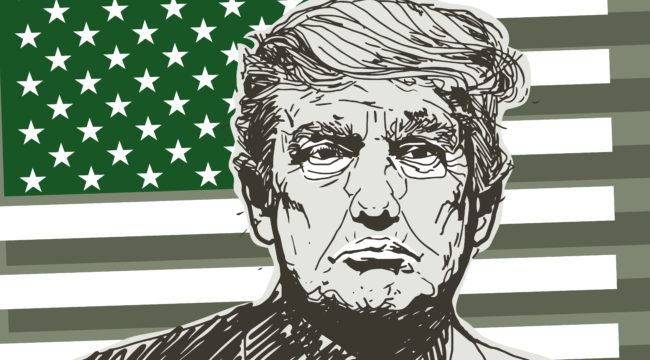Trump Attacks!
The trade war is back on. The trade deadline came and went at midnight last night without a deal. So 25% tariffs on $200 billion worth of Chinese goods took effect at 12:01. The tariffs had previously been set at 10%.
Based on Trump’s comments, 25% tariffs may possibly be applied to an additional $300 billion of Chinese goods.
China said it would respond with unspecified but “necessary countermeasures,” although negotiations continued today in Washington.
Some analysts say China can dump its large holdings of U.S. Treasuries on world markets. That would drive up U.S. interest rates as well as mortgage rates, damaging the U.S. housing market and possibly driving the U.S. economy into a recession. Analysts call this China’s “nuclear option.”
There’s only one problem.
The nuclear option is a dud. If China did sell some of their Treasuries, they would hurt themselves because any increase in interest rates would reduce the market value of what they have left.
Also, there are plenty of buyers around if China became a seller. Those Treasuries would be bought up by U.S. banks or even the Fed itself. If China pursued an extreme version of this Treasury dumping, the U.S. president could stop it with a single phone call to the Treasury.
That’s because the U.S. controls the digital ledger that records ownership of all Treasury securities. We could simply freeze the Chinese bond accounts in place and that would be the end of that.
So don’t worry when you hear about China dumping U.S. Treasuries. China is stuck with them. It has no nuclear option in the Treasury market.
How did we get here?
Trump’s trade representatives have complained that China had backtracked on previous agreements and that China was trying to renegotiate key points at the last minute. The Chinese are not accustomed to such resistance from U.S. officials. But Trump and his team are unlike previous administrations.
China assumed it was “business as usual” as it had been during the Clinton, Bush 43 and Obama administrations. China assumed it could pay lip service to trading relations and continue down its path of unfair trade practices and theft of intellectual property. Trump has proven them wrong.
Trump was never bluffing. He means business, which China is finally learning.
There’s still time to reach a deal, however, before the tariffs actually have any practical impact. The tariffs only apply to Chinese goods that leave port after last night’s deadline. That means goods already en route to the U.S. will not be affected.
So it will be at least two weeks until Chinese goods are actually subject to the extra tariffs. So that leaves the window open for a deal.
Trump announced on Twitter early this morning that “there is absolutely no need to rush” to get a deal done, which removed any urgency from negotiations for the moment. You can expect the cat and mouse to continue for the next couple of weeks, with volatile swings in the stock market depending on the news of the day.
But Trump holds the superior hand as far as trade goes. China exports far more to the U.S. than the U.S. exports to China, so China has far more to lose in the trade war. Since the trade war began, the U.S. has suffered only minor impacts, while the impact on China has been overwhelming. The new tariffs will have even more serious effects on the Chinese economy.
A 25% tariff on $200 billion of goods could take 0.3–0.4% off Chinese growth. And if Trump carries through with 25% tariffs on an additional $300 billion of Chinese goods, it could subtract an additional 0.5% from Chinese growth.
That would cost China 0.8–1% of lost GDP at a time when the Chinese economy is struggling and can least afford it.
To go along with slowing growth, the Chinese financial sector is totally insolvent. Consumers’ savings have been used to finance ghost cities, white elephants, capital flight, Ponzi schemes, bribes and kickbacks.
There are some real assets to show (their trains are the best in the world) and some growth, but not nearly enough to cover liabilities.
With a debt-to-GDP ratio of about 250%, China is already well into the danger zone. How much more debt-financed stimulus can it take?
Research by economists Kenneth Rogoff and Carmen Reinhart indicates that debt-to-GDP becomes a drag on the economy at 90%.
China’s leadership can only hope the damage can be limited before the people begin to question its legitimacy.
Could China’s leadership lose “The Mandate of Heaven?”
Regards,
Jim Rickards
for The Daily Reckoning



Comments: